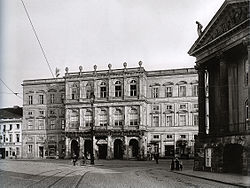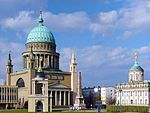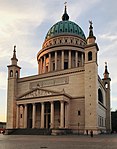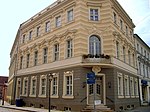Potsdam Hauptbahnhof

Potsdam Hauptbahnhof is the main station in the German city of Potsdam, capital of the state of Brandenburg. It lies on the Berlin–Magdeburg railway and was founded in 1838. However, it has had this name only since 1999. It was originally called Bahnhof Potsdam (Potsdam station) and it was called Potsdam Stadt (city) station from 1960. The station is the terminus of line S7 of the Berlin S-Bahn, which comes from Ahrensfelde. It is also connected with the central bus station, which is a transfer point between Potsdam and the southwestern region of Berlin, and has a stop on the Potsdam tram network. It is classified by Deutsche Bahn as a category 2 station.
Excerpt from the Wikipedia article Potsdam Hauptbahnhof (License: CC BY-SA 3.0, Authors, Images).Potsdam Hauptbahnhof
Heinrich-Mann-Allee, Potsdam Südliche Innenstadt
Geographical coordinates (GPS) Address Website Nearby Places Show on map
Geographical coordinates (GPS)
| Latitude | Longitude |
|---|---|
| N 52.391667 ° | E 13.066667 ° |
Address
Bahnhofspassagen
Heinrich-Mann-Allee
14473 Potsdam, Südliche Innenstadt
Brandenburg, Germany
Open on Google Maps








